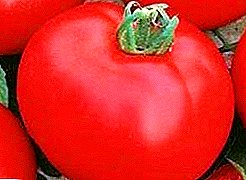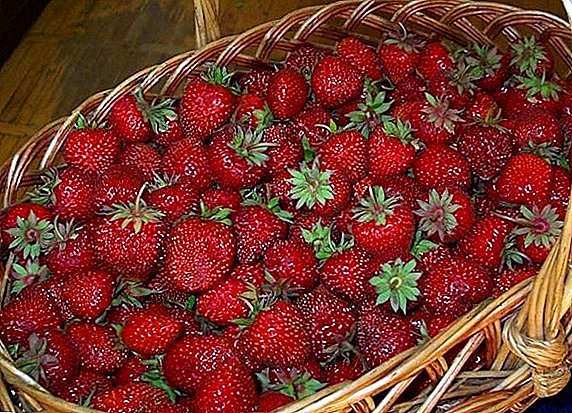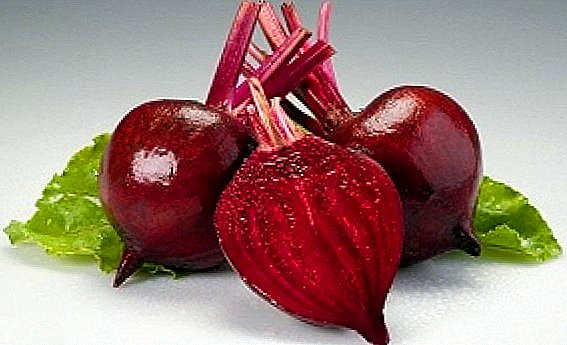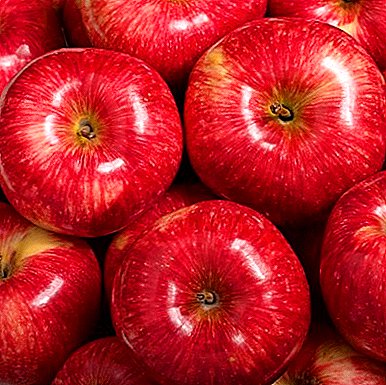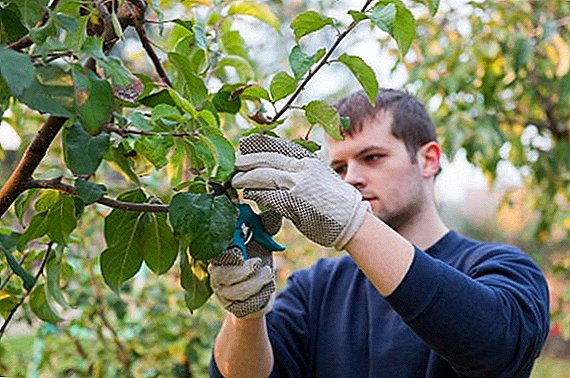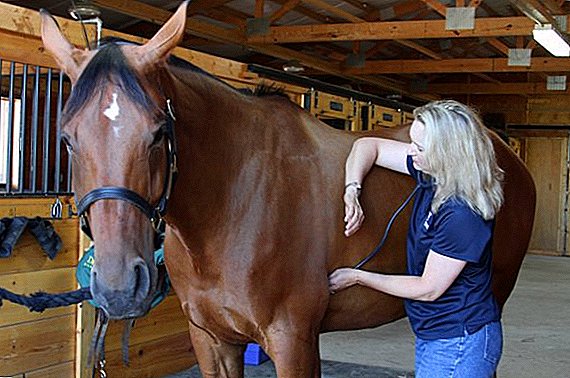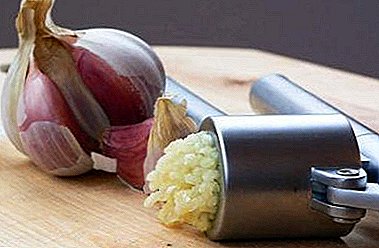 Heavy horse breeds have long been used to transport heavy loads, plowing fields and hunting.
Heavy horse breeds have long been used to transport heavy loads, plowing fields and hunting.
Nowadays, horses are used for this purpose only in some farms, therefore many breeds are on the verge of extinction.
Today we talk about the best horses, which are still used in agriculture.
Soviet heavyweight
This breed of horses was bred by crossing Belgian Brabancons and local horses.  Breed differs in the shortened body length, strong extremities, a short muscular neck.
Breed differs in the shortened body length, strong extremities, a short muscular neck.
Main settings:
- height - 160 cm;
- torso length - 167 cm;
- chest girth - 205 cm.
 As for the nature of animals, they do not differ excessively aggressive towards the owners or third parties. Horses are quite energetic and mobile.
As for the nature of animals, they do not differ excessively aggressive towards the owners or third parties. Horses are quite energetic and mobile.  Let's talk about the valuable qualities of the breed. The “tips” are distinguished from other heavy trucks by their high growth rate, precociousness and endurance. Due to the presence of these qualities, the breed was especially in demand during times of insufficient mechanization of collective farms.
Let's talk about the valuable qualities of the breed. The “tips” are distinguished from other heavy trucks by their high growth rate, precociousness and endurance. Due to the presence of these qualities, the breed was especially in demand during times of insufficient mechanization of collective farms.Did you know? Mares of the Soviet heavy breed give a lot of milk. The record was a mare Rowan - 6173 l, this yield was obtained in 348 days of lactation.
The main colors of the Soviet heavyweight: red, red-roan, bay, bay-roan.
Vladimirskaya heavy
It was bred on the basis of the bay Lord James, Border Brand and Glen Albin. They are considered the ancestors of the Vladimir heavyweight. The breed was officially registered two years after the Second World War, but was used on farms long before that.  Characteristics of heavy truck:
Characteristics of heavy truck:
- height - 165 cm;
- torso length - 172 cm;
- chest girth - 205 cm.
 Positive traits include good temper, unpretentiousness in terms of nutrition, energy, and the absence of complex care. As in the case of the Soviet, these horses are distinguished by precocity and fecundity.
Positive traits include good temper, unpretentiousness in terms of nutrition, energy, and the absence of complex care. As in the case of the Soviet, these horses are distinguished by precocity and fecundity.Important! The best quality livestock can be purchased at the plants of Ivanovo and Vladimir regions.
Common variations of color: black and red with white spots.
Australian Draft
Australian Draft - a breed of horse, which was obtained by crossing four breeds. Its representatives are distinguished not only by good performance, but also by external beauty.  This is the main breed used by Australian farmers to plow the fields, transport the forest or as pets.
This is the main breed used by Australian farmers to plow the fields, transport the forest or as pets.
Many farmers breed them to participate in various competitions, in which they show not only their strength, but also their beauty. They are also used as "ordinary" horses - for riding.
Important! Australian heavy trucks are not adapted to the harsh climate.
Distinctive features: muscular body, short legs, medium head, correct profile, the presence of long hair near the hooves.  Since there is no exact "recipe" for breeding Australians, horses have different characteristics in each farm, therefore it is not possible to provide exact data for height and length.
Since there is no exact "recipe" for breeding Australians, horses have different characteristics in each farm, therefore it is not possible to provide exact data for height and length.
Belgian Heavy Duty (Brabancon)
The classic horse-tractor, which received its name from the historical area of Brabant. Brabancons are used as an initial “material” for crossing with other less productive breeds for the reason that they meet all the stated requirements that are put forward to working horses.  Belgian options:
Belgian options:
- height - 160 cm;
- torso length - 175 cm;
- chest girth - 217 cm.
Brabancons have been used for work since the age of two, so they are considered quite early, unlike other draft carriers that ripen closer to three years.  The main difference between the Belgian - rounded profile.
The main difference between the Belgian - rounded profile.
Did you know? Every year, about 25 thousand horses of this breed are exported to the USA, Germany, Italy, Sweden, France and other countries of the world.
Also worth noting is the life expectancy of these horses. According to official data, Brabancons live for about 22 years, 20 of which they can serve in the household.  Paying attention to other positive aspects of the breed, it is worth saying that horses are docile, undemanding of food or care, and the uterus is distinguished by good fertility.
Paying attention to other positive aspects of the breed, it is worth saying that horses are docile, undemanding of food or care, and the uterus is distinguished by good fertility.
We recommend reading about riding breeds of horses, in particular about Arab and Akhal-Teke.
Bois de Boulogne
These heavy horses were used since the days of ancient Rome, but the breed was officially recognized only during the Anglo-French war. Two types of "French" were bred: the first was used to plow the land, it was very massive and weighty; the second type had less weight and was used for plowing small farms and farms.  Main settings:
Main settings:
- height - 160 cm;
- length - 170 cm;
- weight - 750 kg.
The Boulogne horses are distinguished by short wool, which is colored gray. They have the right profile, strong legs, wide back without expressive bending.  Boulogne distributed only in some European countries: France, Belgium, Germany. They breed support at the national level.
Boulogne distributed only in some European countries: France, Belgium, Germany. They breed support at the national level.
Irish
The Irish draft vehicle is used throughout England and Ireland as a draft horse or for plowing the land.  Irishman is famous for its versatility. If the previous heavy trucks were mainly used for tillage and transportation of goods, then these horses can still be used for hunting or horse racing, as well as a mount.
Irishman is famous for its versatility. If the previous heavy trucks were mainly used for tillage and transportation of goods, then these horses can still be used for hunting or horse racing, as well as a mount.  The lack of weight allows the horse to move quickly both on the road and in rough terrain.
The lack of weight allows the horse to move quickly both on the road and in rough terrain.  It is worth noting that these horses are unpretentious to the diet or care. They can be fed in the same way as ordinary horses, while the Irishman will not feel unwell.
It is worth noting that these horses are unpretentious to the diet or care. They can be fed in the same way as ordinary horses, while the Irishman will not feel unwell.
Important! The Irishman is not distinguished by massive limbs or noticeable muscularity, but his strength is not much inferior to the previous breeds.
Basic colors: gray, red, black.
Percheron
Another "Frenchman", which was bred in the 19th century, however, many scientists argue that this breed existed during the time of heroic campaigns and was used as a sledding horse. Since the rider in the armor weighed a lot, he needed a strong and tough horse that could travel a long distance.  Percheron is distinguished not only by muscularity, but also by unusual grace and mobility.
Percheron is distinguished not only by muscularity, but also by unusual grace and mobility.
Main settings:
- height - 160 cm;
- length - 168 cm;
- chest girth - 200 cm.
 There are two common suits - gray and black.
There are two common suits - gray and black.The horses of this breed not only withstand the strongest loads, but can work for a long time without interruptions. They are not susceptible to most diseases and perfectly take root in different climatic conditions. These advantages brought great popularity of the breed.  Nowadays, the Percherons are used more for tourist excursions and equestrian sports.
Nowadays, the Percherons are used more for tourist excursions and equestrian sports.
Suffolk
An English breed that was officially registered in the mid-18th century. The use of this horse for agricultural work is due to the fact that he performs arable work much faster due to the lack of brushes on his legs.  The clay soils of England before the advent of mechanized equipment were treated with Suffolk.
The clay soils of England before the advent of mechanized equipment were treated with Suffolk.
The massive body visually makes the horse's limbs less broad, but this is only an illusion, since the horses are very strong and can withstand heavy loads.  Also it is worth noting the appeasiveness and friendliness of animals, so they are often attracted to hippotherapy.
Also it is worth noting the appeasiveness and friendliness of animals, so they are often attracted to hippotherapy.
Suffolk has a uniform color, which is a variation of chestnut color. Sometimes you can find individuals with a white spot on the forehead.  Currently, the species is used for horseback riding, for medicinal purposes or in equestrian sports.
Currently, the species is used for horseback riding, for medicinal purposes or in equestrian sports.
Shire
English horse-heavyweight, which is a direct descendant of the war horses used in medieval campaigns.  Shire differ in proportion to the developed body. They are adapted to long work and have a good plodding power.
Shire differ in proportion to the developed body. They are adapted to long work and have a good plodding power.
Did you know? Shaira were used in medieval knight tournaments, only they could withstand an equipped rider with a heavy tournament spear.
Main settings:
- height - 170 cm;
- length 180 cm;
- weight - up to 1400 kg.
 Shaira are considered not only one of the most powerful heavy-duty trucks, but also are the most weighty horses in the world.
Shaira are considered not only one of the most powerful heavy-duty trucks, but also are the most weighty horses in the world.
These horses are most often used for the transport of goods, at least - for plowing the land.  A positive trait is an incredibly docile character. That is why these horses were used for crossing with other breeds to get friendly and hard-working animals.
A positive trait is an incredibly docile character. That is why these horses were used for crossing with other breeds to get friendly and hard-working animals.
Currently used for the carriage of goods in the repair of the railway. They are also in demand in the coal industry.
Scottish Draft (Clydesdale)
We finish our article on the Scottish Draft Breed (Clydesdale), which can compete in beauty with the Australian Dump Truck. However, this is not just a beautiful horse, but also an excellent “tractor” of a plow and various loads.  The Scottish draft carrier unites in itself grace, force and mobility, however that the animal showed itself in a role of good "worker", it needs an excellent food and daily care. Therefore, the Scotsman can not boast of unpretentiousness.
The Scottish draft carrier unites in itself grace, force and mobility, however that the animal showed itself in a role of good "worker", it needs an excellent food and daily care. Therefore, the Scotsman can not boast of unpretentiousness.  Main settings:
Main settings:
- height - 170 cm;
- length - 175 cm;
- chest girth - 200 cm.
Important! Cleanliness of a horse is determined by limbs. They should be straight and small.
 All Scots, regardless of color variations, should have white brushes and light spots on the head. The positive differences from other heavy carriers include growth that exceeds the average. Due to him, the horse has a strong and well-developed bone system.
All Scots, regardless of color variations, should have white brushes and light spots on the head. The positive differences from other heavy carriers include growth that exceeds the average. Due to him, the horse has a strong and well-developed bone system.It has long been used not only horses, but also cattle, in particular, bulls, as a force.
Heavy horses were used from ancient times and did not lose their uniqueness in the 21st century. Despite the fact that many breeds have sunk into oblivion, the strongest and most valuable of them still exist. They are bred by many farmers for unhurried walks or for hunting.
Do not forget that a horse, like any animal, requires attention and care, unlike the mechanism. Therefore, acquiring a "work unit", do not forget that the quality of work depends on the conditions of detention.


